How to think about your no-start diagnostic when the DTCs are present but don’t tell you what’s wrong.
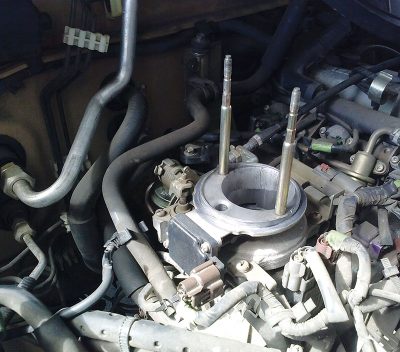
One of the most difficult aspects of automotive repair is diagnostics. Part of that is diagnosing the no-start condition. It’s easy to forget the quick diagnostics that get solved and back on the road in short order. But one stubborn problem can make you completely forget how rewarding the easy diagnostics are.
Using your senses and paying attention to the customer’s story will often point you to the solution, but not always. As part of an initial inspection, the wise technician will pull codes and ask the customer how long the check engine light has been on. With your CONSULT III Plus handy, this is not only easy but usually quite fruitful.
For example: A customer drives in, in her 2006 Sentra®, and she’s scared. Her car died on her while she was driving. Then 5 minutes later it wouldn’t start outside the post office. Her life cannot be interrupted by a dead car; there are kids to pick up and errands to run. The MIL has come on and it’s a P0340 camshaft position sensor. At this point you know where the problem is. It isn’t going to take hours of diagnostic time to nail this one down. An hour later she will be back on the road and you will be the hero.
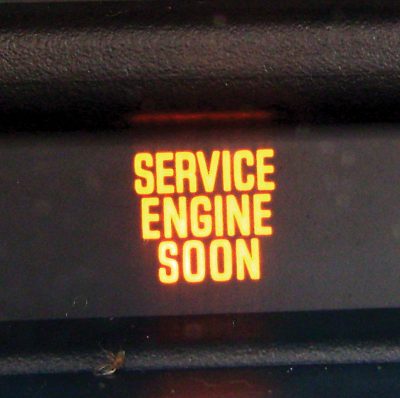
Unfortunately all your jobs will not be that simple. A lot of times the reason for the no-start condition will be buried in a mountain of possibilities that you will have to weed through to get down to the true cause of the problem. With a little luck you may have a DTC that can help point you in the right direction. And even if the code doesn’t indicate a specific system or symptom that would typically kill the engine, it may show you the beginning of an ongoing, worsening problem.
These diagnostics are certainly not for the aspiring new lube tech. The not-so-obvious diagnostician will require a solid knowledge base of how the engine control systems work for the vehicle you are working on. Another requirement is experience. It’s like a mathematical formula; the more experience you have, the less likely it is you will see something new.
It sounds simple, but it really holds true. If you are new to the industry, don’t get frustrated. No amount of schooling, reading, and watching videos will give you the same experience as actual hands-on experience. However, one advantage a new tech has is imagination. Some of the crazier problems will come easier to someone without the years of preconceived notions. Would an experienced tech ever say “what if the fuel pump is hooked up backwards?â€
Don’t be confused, follow the basics. Visually inspect for the obvious first. Check the mileage. This may be important later. Problems common to a car with 200K miles will be different than those on a car with 20K miles. Bring out the CONSULT III Plus and pull your codes with the associated freeze frame data. Hopefully you will have a code that points you right at the problem and you can get straight to it. But sometimes the codes just don’t make it that easy.
If your codes don’t point directly to your problem, check for TSBs. Nissan has gone through a lot of trouble to get this information out to us. It would be a shame to spend a ton of time on a problem that has already been diagnosed for you. Without TSBs related to your particular problem, you may have to get a little more imaginative.
As an example of common codes that don’t point to a no-start, consider the ever popular P0171, P0174; lean condition bank 1 and bank 2. Although these codes are universal across all makes and models, let’s focus on the 1998 Nissan Frontier®.
This code, P0171 (since the 4-cylinder has only one bank in this case) is a result of the ECM not being happy with the readings it’s getting. As the engine is running it starts out with a standard set of values to control the amount of fuel going through the injectors. Soon after start up the oxygen sensors warm up enough to give the ECM good information on the percentage of oxygen in the exhaust. If the ECM sees too much oxygen it will increase the fuel by adjusting the fuel trims to make it perfect. If it has to adjust too much for too long it will set this code.
So far there’s not much that would cause a no-start situation. More likely than not the code has been there for weeks or months and is just being ignored. All it takes to set this code is a small vacuum leak, so we don’t even know if this code is related to our no-start. That’s what makes this code a difficult code when it’s all you have to go on for a no-start diagnostic. You can’t even confirm the issue since you can’t start the engine to warm up the oxygen sensors.
What the P0171 code can tell us is that, at some point, there was more air than expected or less fuel than expected. Two really quick tests may narrow this down for you. First is to attempt to start the truck with the accelerator to the floor. If it starts and runs when kept well above idle, we know it has too much air. That would be time to look for a large vacuum leak or stuck EGR valve. A smoke test on the intake manifold might quickly reveal your culprit.
The second test is to add fuel to the intake through a vacuum hose with either spray fuel injector cleaner or propane. Do not spray the throttle body on this engine as you will find the MAF sensor built into it. One drop of cleaning solution on that MAF sensor and it will likely need to be replaced. If the truck starts we can narrow our search to the fuel delivery side of things. The next step, in this case, is checking for fuel pressure and fuel injector pulse with a noid light.
The no-start incident isn’t what sets the code. It can’t be, because the engine has to run long enough for the oxygen sensors to heat up. It can, however, still be useful in helping us put the puzzle pieces together. The P0171 code can set from low fuel pressure caused by a failing fuel pump. Basically it’s an early warning of the coming failure. Unfortunately it could just as easily be caused by a brittle vacuum line failing, and have nothing to do with no-start to begin with.
One piece of warning is that you can’t assume the fuel delivery system is working properly just because you hear the fuel pump running. There are other ways you can have insufficient fuel pressure. To start with there could be a leak in the fuel line inside the tank, a significantly plugged fuel filter or strainer, or even a kinked or crushed fuel line from the tank to the fuel rail. It is a lot less likely but a significant vacuum leak can also prevent starting. Check for broken vacuum hoses, cracked manifolds, or even a damaged throttle body. If you suspect a vacuum leak, just do a smoke test and it should make any leak very evident.
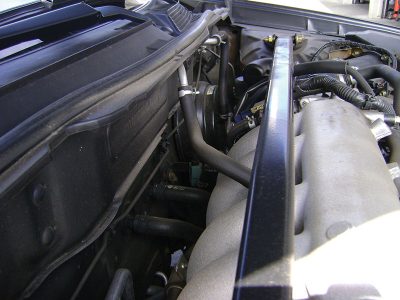
Other codes to consider as possible precursors to a no-start condition would be P0172 and P0175. These indicate a rich condition in bank 1 and bank 2 respectively. Like the P0171 and P0174, these codes are universal across most makes and models and do not typically indicate a problem that is significant enough to cause a no-start condition. That doesn’t mean they will not be helpful in pointing you in the right direction.
For these codes let’s consider the 2002 Nissan Quest®. This minivan has a V6 engine so it is possible, and even common, to have both P0172 and P0175 codes, at the same time. Like the lean codes these codes are the ECM’s way of letting you know it has too much fuel going through the engine and it’s having trouble reducing the fuel volume enough to run near stoichiometric air/fuel ratio. This code will also not set until the engine has been running long enough for the oxygen sensors to heat up enough to read the exhaust oxygen level.
This is a situation where the codes can tell you what was happening before the engine killing failure. It also may be caused by something that has nothing to do with your current dead engine. It may point you in the right direction, so it’s worth looking into. As always, a quick going over of the basics is a good idea. What kind of overall condition is the vehicle in? Is everything good, visually under the hood? Is it spraying gasoline out of anywhere? Is it actually on fire at this time?
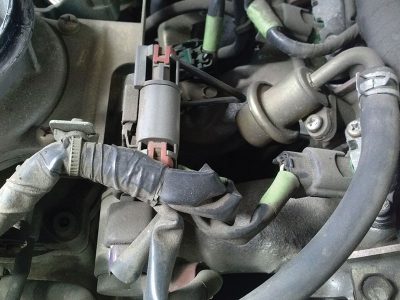
This is a good time to use a little bit of caution. If you smell raw gas; STOP! Don’t try to start the engine until you identify where the smell is coming from. One way that an engine can fail to start and have these codes is a fuel pressure regulator failing internally. Inside the regulator is a diaphragm that can fail and leak fuel through to the vacuum hose. The vacuum hose is doing its job and sucking the fuel right into the intake manifold.
If it’s bad enough it can cause a dangerous situation in that gas will pool up in the intake, exhaust, cylinders and anywhere else it can find a resting place. This is one way it can cause a no-start. If you smell gas, pull the regulator’s vacuum hose and see if there is fuel in it. The presence of any fuel means a new regulator is needed to start with.
It is difficult in these situations to identify whether the regulator is the cause of the no-start condition or simply another problem with the engine. A general rule of thumb is to use your nose. If you smell the gas the regulator is likely the cause. If you don’t smell the gas, try starting the van with the throttle to the floor. This is commonly referred to as a “clear flood†procedure. Should the van start with the throttle down, you are likely looking at a flooded engine. Replacing the fuel pressure regulator is the next step.
There are a few other situations that can cause a flood, such as a temporary ignition failure, leaking injectors, a short in the injector harness, or even a faulty ECM. If your only codes are P0172 and P0175 it’s a solid place to start. Another place to look might be at the air intake system for a significantly out of specification or contaminated MAF sensor.
Consider if you will a 2002 Xterra®. The customer has it towed in to your shop for a no-start. The check engine light is on but the only code is a P1464. The diagnostic procedure for a P1464 has only three steps, but one of them is remove the fuel sending unit from the gas tank. This code could have nothing to do with the no start. The smart tech might go ahead and put a gallon of gas in the tank before spending too much time with the more involved tests.
If the ECM sends out a P1464 code it is seeing incorrect signals from the fuel sending unit, either shorted to power or grounded. An incorrect fuel gauge can cause repeated “out of fuel†situations. It would be unnecessary to actually go through the diagnostic process if this were the only code on a no-start. For the price of a gallon of fuel you can quickly either confirm it as the problem or dismiss it.
If the fuel gauge is actually inoperative, consider checking the fuel pump function as well. Should a customer frequently run out of fuel due to a faulty gauge, it can be very hard on the fuel pump. The pump is cooled and lubricated by the fuel going through it.
The code P1320 will cause a no-start or, worse yet, an intermittent no-start condition. The code is indicating that the ECM does not see the ignition coil primary circuit. If you have any other codes with it, like P0335, P0340, or P1136 start with those codes first, especially since a bad CMP sensor can cause the P1320. If however this is your only code, patience and diligence will come in handy. And don’t rule out a bad CMP sensor.
With a 2000 Nissan Sentra as an example, the diagnostic procedure for this code, and many like it, has a lot of steps that are tempting to skip. Don’t do it. The steps are in a very specific order and assume you have done the previous steps to make the current test valid. Simply put; if you skip around you’ll miss something.
Unfortunately, all too often, these kinds of codes can be the result of intermittent failures. If that is the case make sure the failure is actually happening while you are testing the system. Say, for example, step 1 is to see if the engine runs or not. The technician cranks the engine and it doesn’t start. He goes under the hood and checks fuses, and finds nothing. He goes back to step 2 to check for power at the ECM and it has battery voltage on both white wires. Great! Test passed and he’s on to step 3.
The problem is, when he was moving the fuses to check them, a loose connection made contact and had he tried to start the car again it would have started. Now he’s testing down the diagnostic chain and will not find the problem since he missed the situation change at step 2. He may have been right that it was a bad relay, but if it’s not, skipping ahead made this a really long diagnosis.
Don’t get too hung up on the codes. It is quite possible, if not likely, that there may be unrelated problems. When the obvious issues like spark and fuel injector pulse test OK, then it’s time to take a good hard look at the codes. It can be a really frustrating day when you spend an hour finding out that it needs an oxygen sensor but the engine still won’t start. This isn’t the time to solve these codes, it’s the time to use them to narrow down your search for the real culprit, the no-start condition. With experience you will know better when to buckle down on the code and when to think outside the box.

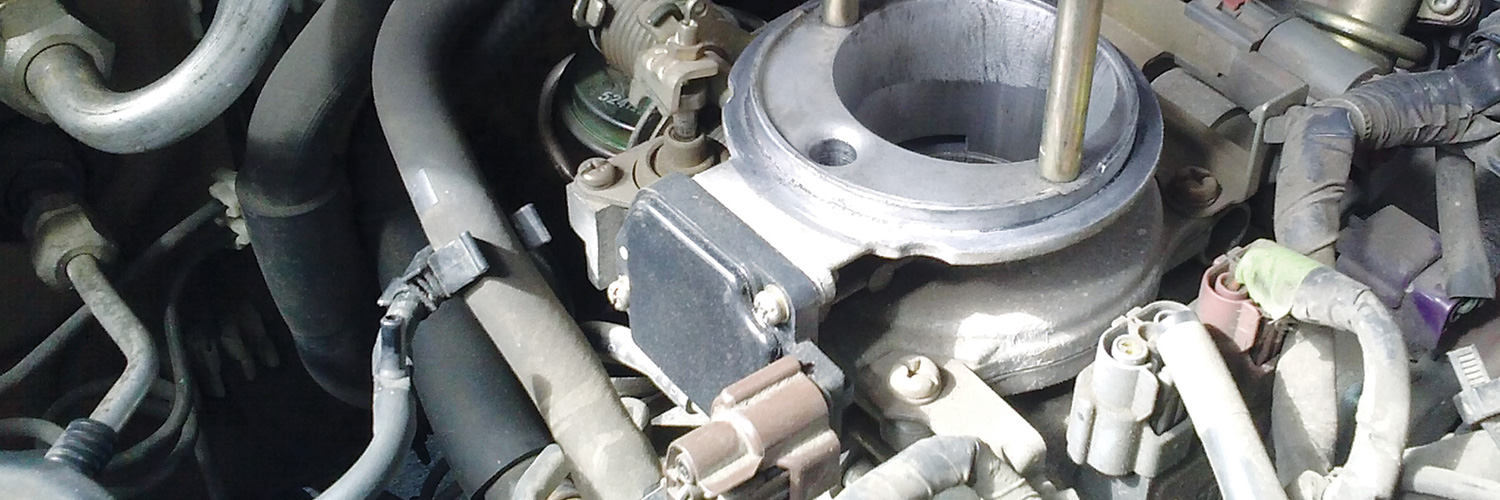
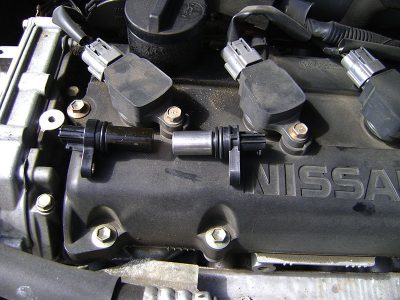
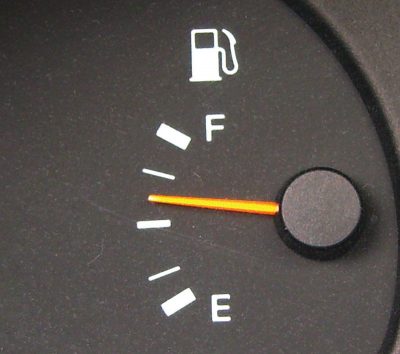





0 Comments